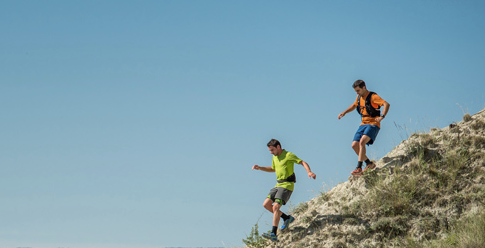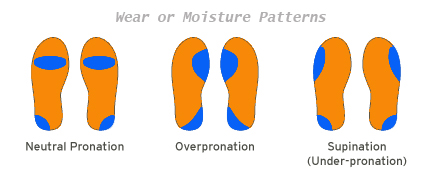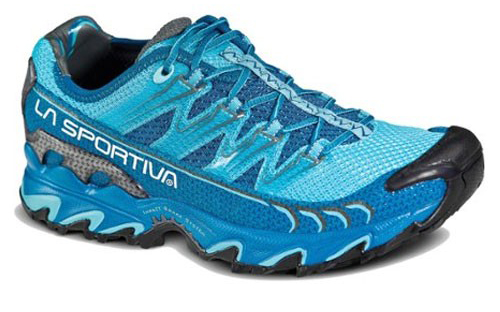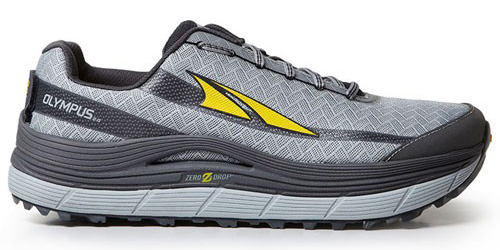Choosing a New Running Shoe | Which Shoe is Right For You?

Choosing the right running shoe is arguably one of the most important decisions you can make when it comes to your running career. The right shoe will mean hours of enjoyment, fitness and, all things going well, relatively pain-free time spent on the road or trail. We say "relatively pain-free" because well, running is tough. It's going to hurt sometimes. But we want it to hurt in the right way, not in the debilitating and "I never want to run again" way. After all, what’s that old saying? Something about pain and gain going hand in hand?
So, if choosing a shoe is so important to your overall enjoyment of the sport, how should one go about making sure the right choice is made? Well, the first thing you’ll want to do is determine what type of running you want to be doing. For simplicity’s sake, we’ll divide things up into road-running and trail-running. As with anything, the more you dive into things, the more nuance and subtlety there will be, but for now, those two categories should suffice to help you make a decision.
Road-running shoes, as the name implies, are designed for running on pavement or other hard-packed surfaces. Meanwhile, trail-running shoes are designed for off-road use in areas with rocks, roots, mud, and other such obstacles. Because of the differences in expected terrain, trail-running shoes tend to feature more aggressive tread, support, and underfoot protection from rocks than their road counterparts.
After you’ve figured out where you plan to run, the next step is to determine how you run. You run by putting one foot in the front of the other in a somewhat faster-than-walking motion, right? Well, yes, technically that is correct. However, it turns out that there’s actually more to it than just that. Running experts generally break things down into three main categories; pronation, overpronation, and supination. If you own a pair of running shoes already you can actually check what style of runner you are by checking the wear pattern on the bottom of your shoes.
If you’re just getting into running, or you don’t have a pair of worn-out shoes, there are a few other options as well. A relatively simple technique involves a bowl of water, a brown paper bag, and your own bare feet. It’s pretty simple. Simply lay the brown paper, it doesn’t actually have to be a bag, down on the floor. Get your feet wet in the bowl, then shake them off a bit so they’re not actually dripping, just damp. Walk forward as you normally would, having one of your steps go over the brown paper. You’ll be able to see the way your foot strikes the ground in the distribution of moisture on the paper. We use brown paper because the wet spots tend to show up much more clearly than they would if you were to use white paper. Feel free to do this a few times to ensure you get a good visual.

Basic pronation, also called neutral pronation, is biomechanically the “correct” and most efficient type of running. The wear pattern on your shoe will show wear under the ball of the foot where it strikes the ground, and a smaller wear pattern on the outside of each heel. If you’re one of those lucky runners who naturally has a neutral running style, first, take the time to thank whomever you want, then go ahead and get yourself in a pair of neutral shoes. Neutral shoes, as the name suggests, generally feature a medium amount of shock absorption and some arch support, though not an abundance of either.
Overpronation is extremely common in runners and will show an increased wear pattern along the inside edge of the shoe, caused by an exaggeration of your foot’s natural inward roll. Running for long periods with overpronation can lead to increased risk of knee pain and potential injury. To help combat this, many runners need stability or motion control shoes. Stability or motion control shoes generally offer stiffer heels or a firm post reinforcing the arch side of the midsole.

Supination, or under-pronation is characterized by an outward rolling of the foot, causing higher impacts with each stride. Relatively few runners tend to under-pronate, but for those who do it’s imperative that they utilize a shoe with extra cushioning and flexibility, such as the Olympus 2.0 from Altra. The extra cushion provided by this shoe, as well as others, will help reduce impact forces, also reducing the chances of long-term injury.

So, now that we’ve described the three types of runners and how to figure out which one describes you, it’s high time to pick out some shoes, wouldn’t you say? It just so happens that there is a huge variety of shoes out there. Knowing your runner type and knowing which type of shoe to buy is at least half the battle. The other half is going to be trying it on for fit. Just because a shoe is a certain “type,” it doesn’t necessarily mean it will fit your foot. Trying on shoes is going to give you great insight into what’s going to be comfortable for you out on the road or trails. So, with that in mind, head down to Granite Chief armed with your newfound knowledge and let’s put you in some new shoes today!